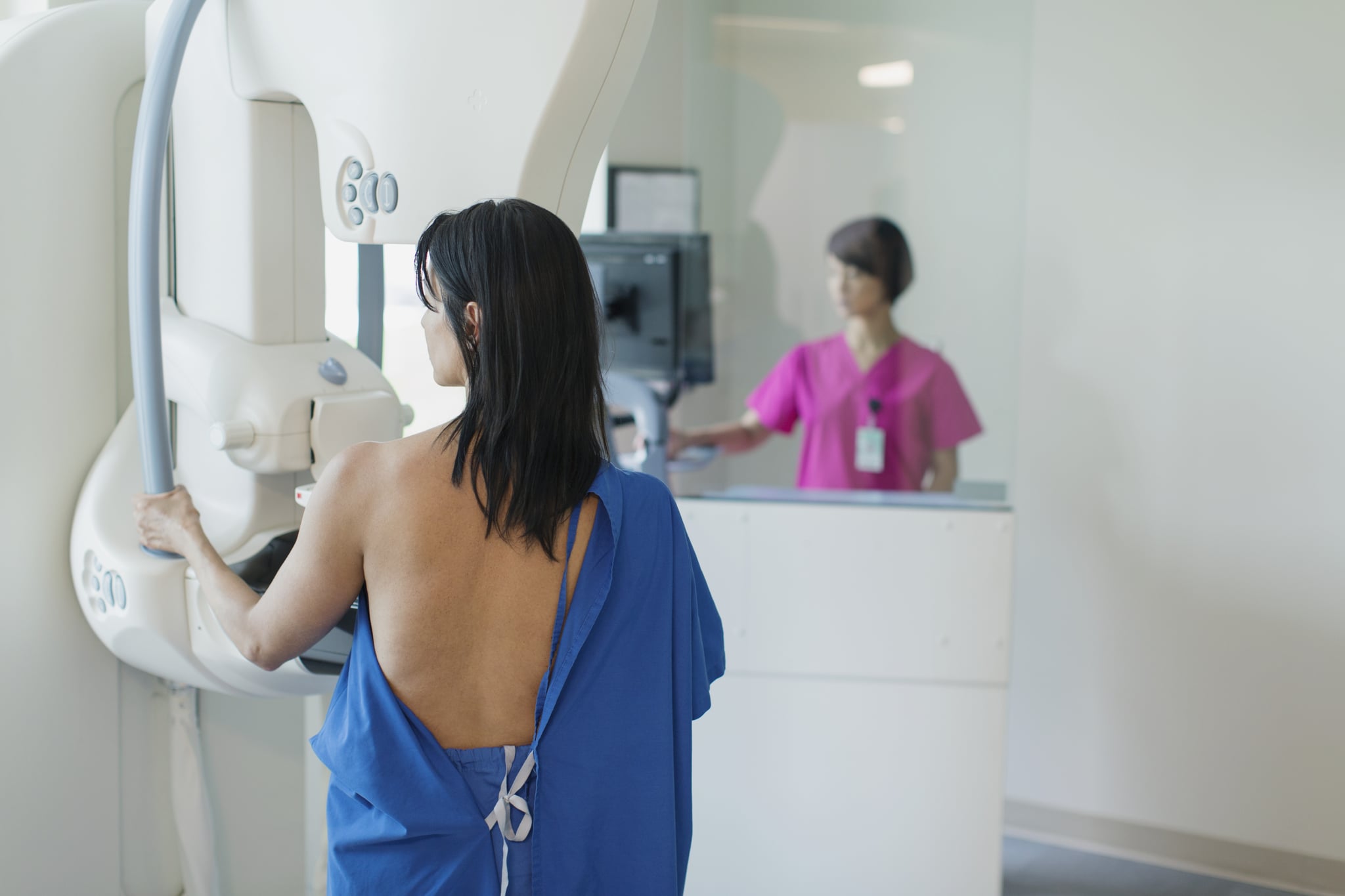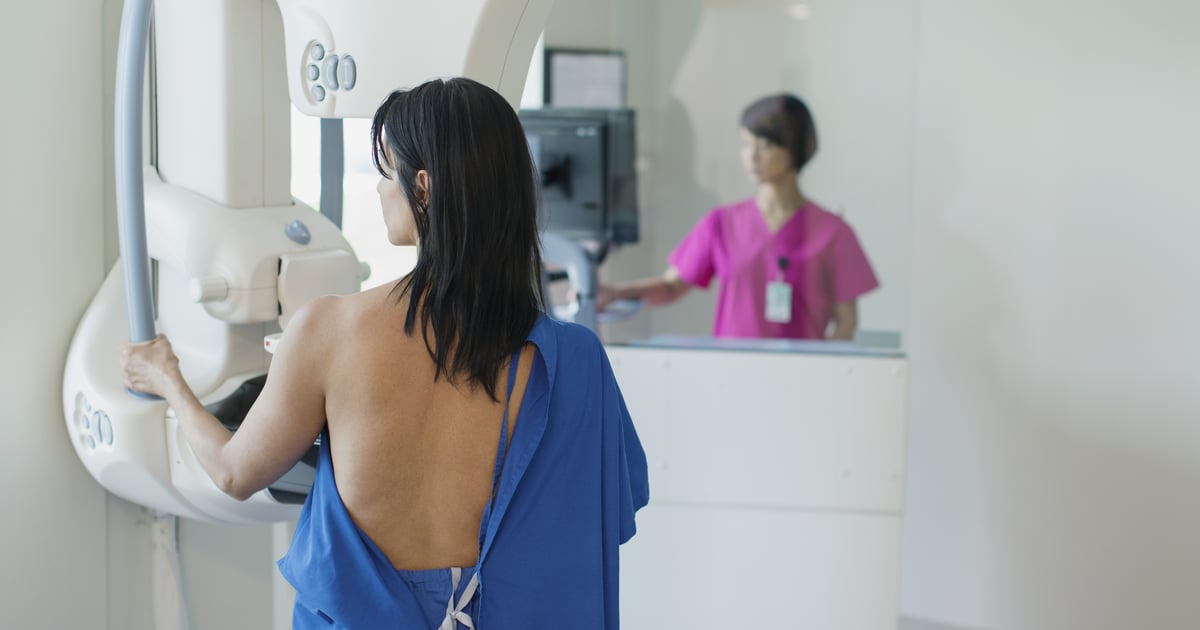Products You May Like

Breast cancer is the second-most common cancer in women in the United States, and it’s responsible for about 30 percent of all new female cancers each year, according to the American Cancer Society. With that, screening for this disease is important — and the gold standard is via mammogram.
If you’ve never had a mammogram before, it’s understandable to have questions about how the process works and whether mammograms hurt. But you may also have some really basic questions about what this lifesaving procedure involves and what it does, exactly.
At a basic level, a mammogram is a procedure that takes an X-ray of your breast, according to the Centers For Disease Control and Prevention (CDC). Doctors use a mammogram to look for early signs of breast cancer, and the American Cancer Society (ACS) recommends that women between the ages of 40 and 44 at least consider getting a mammogram. By age 45, women should get annual mammograms, per the ACS, and women 55 and older should get mammograms at least every two years and continue to do so as long as they’re in good health and expected to live 10 or more years longer. Breast cancer screenings are not typically recommended for women under 40, unless you have certain genetic mutations — then mammograms could begin at 25 — or family history of breast cancer, in which case screening would begin 10 years earlier than the first affected relative in the family, per Cleveland Clinic.
“The smaller and less advanced cancers we find with screening, the more likely women are able to survive,” says Sonya Bhole, MD, a diagnostic radiologist at Northwestern Medicine.
“In addition to saving lives, getting your annual screening mammogram has the power to potentially reduce the severity of treatment that women with breast cancer must undergo,” points out Karla Sepulveda, MD, an associate professor of radiology at Baylor College of Medicine. “Studies have demonstrated that cancers found with screening mammography are more likely to be smaller cancers that have not metastasized, which means [they are] less likely to need more intensive treatment such as mastectomy or chemotherapy. This also means shorter recovery time and better prognosis.”
But despite their lifesaving potential, there is some fear surrounding mammograms, including how they will feel and whether there are any side effects. Here’s exactly what to expect at a mammogram, along with what the recovery is like.
Do Mammograms Hurt?
Let’s address this upfront: A mammogram may feel slightly uncomfortable for a moment, but it’s probably not going to hurt. “Every woman is different, but in general, a mammogram shouldn’t be painful,” says Richard Reitherman, MD, PhD, the medical director of breast imaging at MemorialCare Breast Center at Orange Coast Medical Center in Fountain Valley, CA. “There may be a second or two of discomfort when the breast is compressed, which only takes a few seconds, but that’s it.”
Factors like your general breast sensitivity and where you are in your cycle may also play a role in how a mammogram feels for you, Reitherman says. Still, “most patients tolerate mammograms very well,” Dr. Sepulveda says.
What Can You Expect During a Mammogram?
The process of getting a mammogram is fairly simple. Dr. Sepulveda estimates it takes about 15 minutes from start to finish. The CDC breaks down the process this way:
- You will stand in front of an X-ray machine.
- A technologist will place your breast on a plastic plate.
- Another plate will firmly press your breast from above.
- The plates will flatten your breast and hold it still while the X-ray is taken.
- The steps will be repeated to take a side view of the breast, and to do the other breast.
“The purpose of the pressure during a mammogram is to even out the breast tissue to make sure the entire breast is included and to make sure that abnormalities are not hiding within overlying breast tissue,” Dr. Bhole says.
After the mammogram is done, the CDC says you’ll need to wait for a moment while the technologist checks the X-rays to make sure the pictures don’t need to be redone.
Do You Need to Do Anything the Night Before a Mammogram?
Not necessarily. There is no special diet you need to follow before a mammogram or fasting involved. However, there are a few things to consider.
The ACS recommends that you avoid applying deodorant, antiperspirant, powders, lotions, creams, or perfumes under your arms or on or under your breasts before your mammogram. “These substances can show up as white artifact on the mammogram examination, making it difficult for the radiologist to read,” Dr. Bhole says. (If you forget, don’t stress — most facilities have wipes to help you remove any residue, she says.)
If you can, you may want to wear pants or a skirt to your mammogram appointment. “We usually ask patients to wear a two-piece outfit so they only have to remove their top for the exam,” Dr. Sepulveda says.
If you’re worried about pain, Dr. Sepulveda says it’s OK to take ibuprofen or acetaminophen in advance of your mammogram to “minimize discomfort.” One more pro tip, per Dr. Reitherman: try to schedule your mammogram for when you’re not having your period, to lower the risk of breast sensitivity.
Will You Have Pain After the Mammogram?
You shouldn’t, but of course, everyone is different. “Some women may feel sore, similar to what was felt during the process of taking the picture,” Dr. Bhole says. “Most women, however, tolerate the examination well without pain afterwards.”
If you feel pain after your mammogram, she suggests talking to your doctor about it. But if you have mild discomfort, Dr. Reitherman says you’re absolutely fine to take ibuprofen or acetaminophen or to use a warm compress on your breasts to provide relief.
Are There Other Mammogram Side Effects?
In most situations, you’ll walk away from your mammogram feeling just fine. However, Dr. Sepulveda says that some people may have skin redness “that resolves quickly” after the exam.
Doctors say you also don’t need to stress about radiation involved in the exam. “A mammogram uses a low dose of radiation to get the picture,” Dr. Bhole says. “However, the dose is so minimal that there should not be any long-term side effects.”
Experts stress the importance of getting a mammogram if you’re due for one. “Overall, the lifesaving benefits of mammograms far outweigh any potential mild side effects of the exam,” Dr. Sepulveda says.
